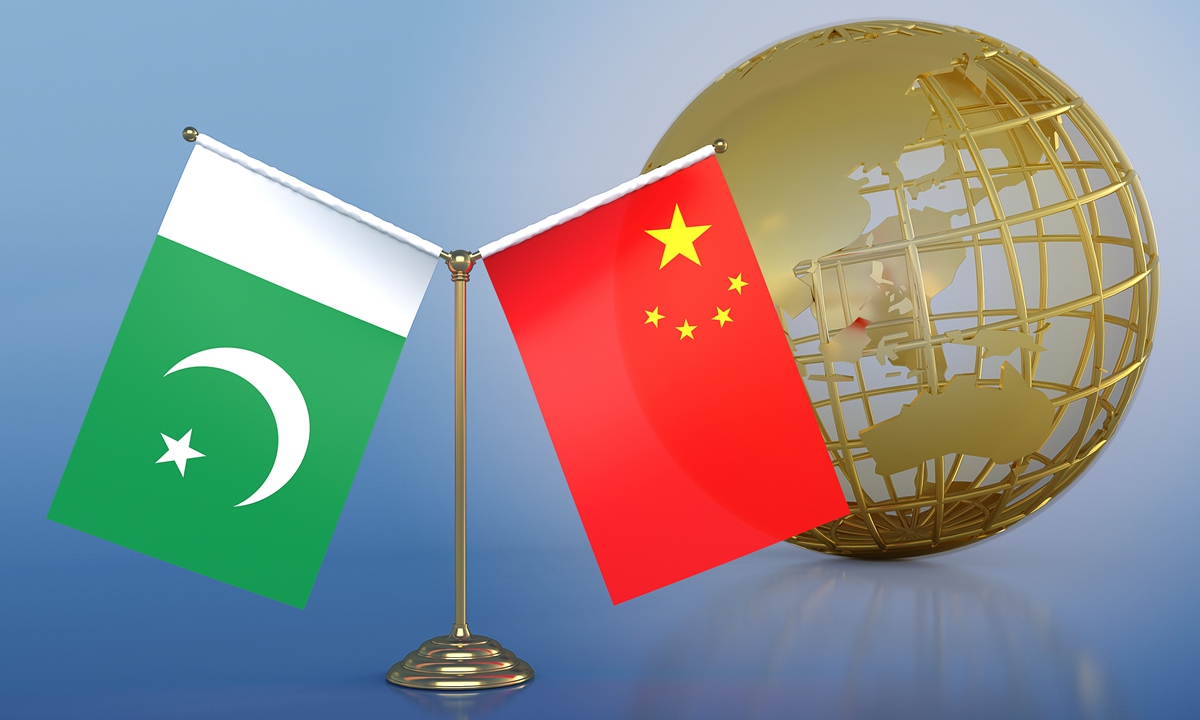
by Zafar Iqbal Yousafzai 25 November 2023
China and Pakistan have solidified their commitment to enhancing cooperation under Beijing’s Belt and Road Initiative (BRI), marking a significant milestone with the signing of a pivotal agreement to construct a multibillion-dollar railway project in Pakistan. The Belt and Road Forum held in Beijing saw Chinese Premier Li Qiang and Pakistani Prime Minister Anwar-ul-Haq Kakar engage in bilateral discussions, culminating in the signing of several memorandums of understanding and agreements pertaining to the China-Pakistan Economic Corridor (CPEC).
CPEC, standing as a flagship initiative within the BRI framework, is poised to facilitate over $65 billion in Chinese investments in Pakistan. These investments encompass a diverse array of infrastructure developments, including roads, railways, energy projects, and more. The overarching aim is to bolster land and sea trade routes in the region, fostering economic growth and regional connectivity.
One of the central documents signed during the forum focused on the Mainline-1 (ML-1) railway project, a substantial undertaking estimated at $7 billion. This transformative project aims to establish a railway track spanning over 2,600 kilometers from Peshawar in northwestern Pakistan to Karachi in the south. With shared funding from both China and Pakistan, the project is anticipated to unfold over 16 years, significantly boosting line capacity from 34 to 134 trains each way per day. Moreover, it will elevate the speed of these trains to 165 kilometers per hour, doubling the current rate.
In his address to the Belt and Road Forum, Prime Minister Kakar underscored the instrumental role played by CPEC in generating new economic opportunities within Pakistan. Over the past decade, CPEC has seen the successful completion of over 50 projects valued at $25 billion. Notably, the deep seaport of Gwadar has been operationalized with state-of-the-art facilities, emerging as a vital hub for transshipment to regional countries, particularly landlocked states.
The ML-1 project stands out as the most significant endeavor within CPEC, forming the linchpin of the entire initiative. Beyond connecting China’s Xinjiang region to Gwadar port, providing access to warm waters and facilitating trade with the Middle East and Europe, ML-1 is expected to invigorate Pakistan’s local industries, including steel, cement, and other manufacturing sectors. It serves as a driving force for subsequent CPEC projects, promising far-reaching economic benefits.
The ML-1 project holds strategic significance in regional connectivity. By connecting China’s Xinjiang region to Gwadar port, it opens up access to warm waters and establishes vital trade routes. The anticipation is that ML-1 will not only enhance transportation but also stimulate local industries, contributing to the overall economic development of the region. Furthermore, the development of Gwadar port along the Arabian Sea has added a crucial dimension to CPEC. The port holds strategic significance near the Strait of Hormuz, a vital oil shipping route. Prime Minister Kakar highlighted that a new international airport, constructed by China in Gwadar, is nearing inauguration, further solidifying the city’s role as a regional trade and connectivity hub.
CPEC’s impact extends beyond transportation and trade routes to energy infrastructure. The initiative has added at least 8,000 megawatts of electricity to Pakistan’s national grid. Looking ahead, an additional 10,000 megawatts from clean energy projects are expected to be completed within the next five years. The development of industrial zones is also underway, attracting both local and Chinese investors and subsequently boosting Pakistan’s exports and foreign exchange reserves.
Despite these significant contributions to Pakistan’s infrastructure and economy, CPEC has not been without its share of criticism. Concerns and debates have arisen regarding the debt generated by the projects and the associated political influence of China. Critics have raised alarms about the financial implications and sovereignty of participating nations. In response to these concerns, Prime Minister Kakar emphasized in a recent interview with a Chinese media outlet that China’s development financing is unique and devoid of conditions found in traditional development financing models. He dismissed allegations that the Belt and Road Initiative had ensnared participating nations in “debt traps,” stressing that it serves as an essential tool for comprehensive and inclusive development of nations.
Pakistan’s government data supports this stance, indicating that CPEC has generated 200,000 jobs, constructed over 1,400 kilometers of highways and roads, and added thousands of megawatts of electricity to the national grid, alleviating years of power outages in the country. Moreover, the port of Gwadar has handled 600,000 tons of cargo over the past 18 months.
In a prelude to the Belt and Road Forum, the Chinese government issued a report documenting the achievements of its BRI financing. The report highlights that significant projects within the China-Pakistan Economic Corridor are underway, with Gwadar Port in Pakistan making substantial strides toward becoming a logistics center and industrial base. It also underscores the successful operation of two nuclear power plants in Karachi, built jointly by China and Pakistan, utilizing China’s Hualong One nuclear technology. These plants are pivotal in bolstering Pakistan’s energy infrastructure and will contribute to the nation’s economic growth.
China and Pakistan’s unwavering commitment to CPEC and the Belt and Road Initiative exemplifies the strength of their partnership. As projects within CPEC continue to progress, they promise to generate long-term benefits for Pakistan, strengthen economic ties between the two nations, and contribute to regional connectivity and trade facilitation. The transformative impact of these endeavors on infrastructure, economy, and regional connectivity positions the China-Pakistan Economic Corridor as a beacon of collaborative development in the broader region.
